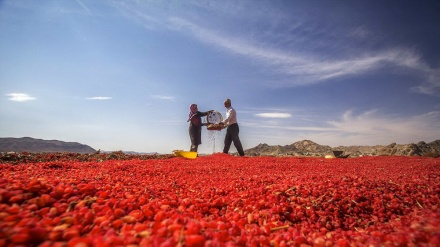Iranian Market (49)
Welcome to this edition of our weekly program, the Iranian Market. In this episode, we’re going to discuss the Iranian turquoise which sets the standard for quality.
Extraction of turquoise in Iran dates back to 5,500 years. It is found in three main colors, namely blue, green and bluish green, which are classified further from light to dark.
In Iran, turquoise is called Firoozeh which means victory in Farsi language. Turquoise is actually one of Iran's national gemstone.
It is said that the first specimens of turquoise to which the Europeans were exposed came from Iran via trading posts in Turkey.
The best of Iranian turquoise is rich blue, with less matrix than most turquoise mined elsewhere. It is also distinguished by white patches.
Turquoise is never a hard mineral, but Iranian turquoise is usually harder than turquoise mined in other locations.
Iranian turquoise enjoys the best quality in the world.
Turquoise is a non-vitreous stone, which differs in shade from blue, green and blue-green depending on its origin.
The blue color of turquoise is enhanced when it has been formed in an area that contains more copper. If there is more aluminum, it becomes more greenish and in the presence of zinc, the deposits display a rare yellow-green combination.
Neyshabur turquoise mines located 53 kilometers northwest of the city and near the old caravan routes, are believed to be among the world's oldest known turquoise mines, which supplied the stone to Europe, Western Asia and America.
The quality of Iranian turquoise is unique in the world and the biggest and oldest turquoise mine is located in Firouzeh City in Neishabour, located in Khorasan Razavi province.
In Iran, the high quality and the use of advanced methods for cutting turquoise have increased its value.
Iran exports turquoise to East Asian countries and Persian Gulf littoral states.
Also, Iranian artists use turquoise in various forms of art including calligraphy and handicrafts.
Iranians divided turquoise into three groups.
Fine ring stones were called Anghoshtari. Iranian turquoise stones of intermediate quality were called Barkhaneh. Iranian turquoise stones that were pale, greenish, or with spots from the matrix were called Arabi.
Traditionally, brilliant blue stones with no matrix were preferred in the West Asia North Africa region.
Today, Iranian turquoise in a variety of shades and matrices can be found in jewelry and appreciated for its classic beauty.
AE/ME/SS


